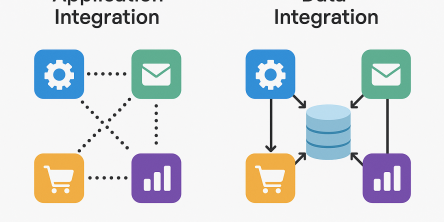Data Warehouse Tools: Factors to Keep in Mind Before Choosing

A data warehouse is a collection of data from different sources that is stored in a way that makes it easy to analyze. Data warehouses are used by businesses to make better decisions, improve operations, and gain a competitive advantage.
Benefits of using a Data Warehouse
- Improved decision-making: Data warehouses can help businesses make better decisions by giving them access to historical and current data.
- Improved operations: Data warehouses can help businesses improve their operations by providing insights into their business processes.
- Competitive advantage: Data warehouses can help businesses gain a competitive advantage by providing access to data their competitors do not have.
Suppose you are looking for a way to improve your business. In that case, a data warehouse may be the right solution for you since it can help you make better decisions, improve operations, and gain a competitive advantage, among other things. And the selection of the right data warehouse tools is equally crucial to harness the power of their data & to derive meaningful insights. While many options are available in the market today, choosing the ideal data warehouse tool would require careful evaluation of several key factors.
With this blog post, I aim to provide a comprehensive overview of the critical considerations for businesses to consider when finalizing data warehouse tools. And by understanding these factors and their implications, companies can make informed decisions & invest in the right tools that align with their specific needs. Further, it would enable them to unlock the full potential of their data analytics initiatives.
But before you pick a data warehouse, do not forget to factor in the following considerations for choosing the right data warehouse:
- Determine data source: The first step in choosing a data warehouse is determining what data you need to store. This will help you narrow your options and choose a data warehouse that can handle the volume and type of data you need. There are two main types of data sources: structured and unstructured. Structured data is organized in a regular format, such as a table. Unstructured data is not collected in a standard format, such as text documents, emails, and images. Most data warehouses can handle both structured and unstructured data. However, some data warehouses are better suited for certain types of data.
- Define budget: Data warehouses can range in price from a few thousand dollars to millions. Setting a budget before you start shopping is essential so you don't overspend. A few factors will affect the cost of a data warehouse, including the size of the data warehouse, the features you need, and the vendor you choose.
- Performance: One of the most important factors to consider when choosing a data warehouse is performance. It would help if you ensured the data warehouse could handle the volume of queries you'll be running. A data warehouse's performance is affected by several factors, including the hardware you use, the software you choose, and the way you design your data warehouse.
- Automation capabilities: Data warehouses can be complex to set up and manage. If you don't have the resources to do it yourself, you must choose a data warehouse with automation capabilities. Automation capabilities can help you save time and money by automating tasks such as data loading, cleansing, and analysis.
Choosing the right data warehouse is an important decision. There are many factors to consider, including the type of data you need to store, your budget, performance requirements, and automation capabilities. Cloud data warehouse tools offer several advantages over traditional data warehouses, including scalability, flexibility, and cost-effectiveness. Consider your specific needs and requirements when choosing a cloud data warehouse tool
Similar Articles
At first glance, off-the-shelf software appears to be a dream come true. They are quick to set up, cheaper upfront, and marketed as “universal.”
A modern business must continually adapt. This bit everyone seems to know.
The modern healthcare industry is undergoing a significant transformation. The models of healthcare that we are used to thus far are now making way for a more data driven approach
In the modern world, maintaining good health often feels like a constant challenge. Between busy lifestyles, sedentary habits, and lack of motivation, many people find it difficult to stay consistent with exercise, diet, or wellness practices.
Every news publisher's dream, or just getting started, hits that wall sooner or later. What do you build your site on? You’ve basically got two roads: WordPress or custom development.
Discover key features construction teams need in permit tracking software to boost efficiency, stay compliant, and streamline project management.
Thanks to cloud computing, specialized SaaS apps have become rather accessible.
Let’s be honest – managing royalties isn’t exactly the fun part of working in media or publishing, but it is very important because it protects the creator’s rights and work ownership.
The Software as a Service (SaaS) industry continues to transform before 2025 which creates new obstacles for business operations.








